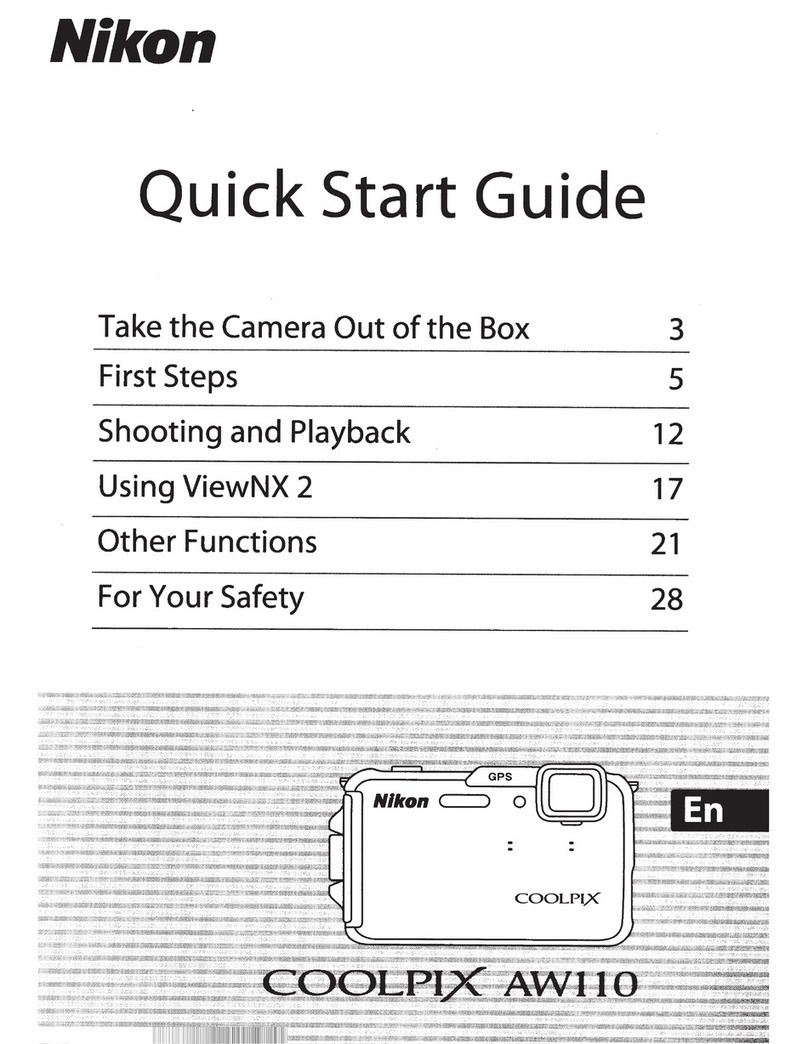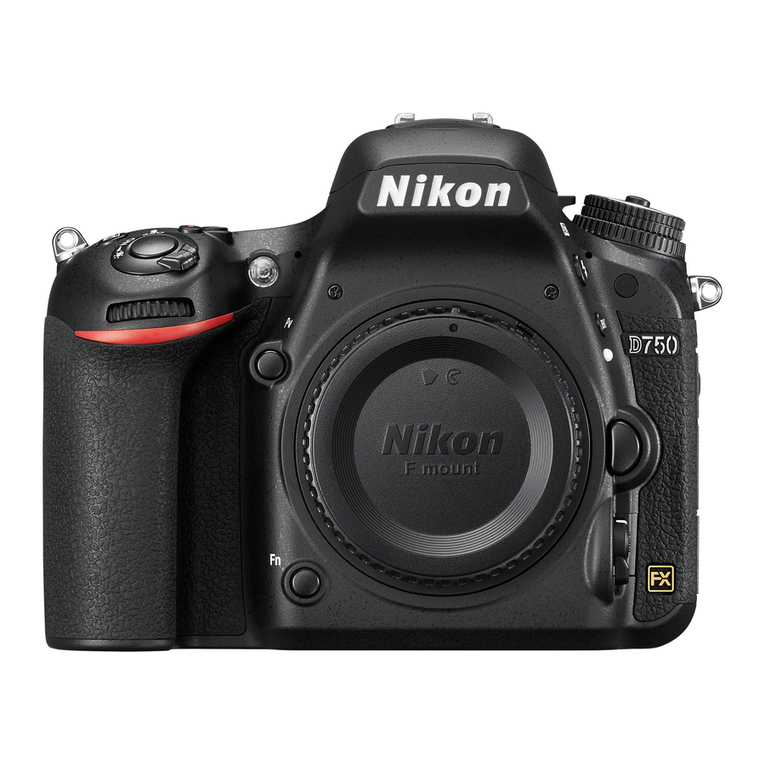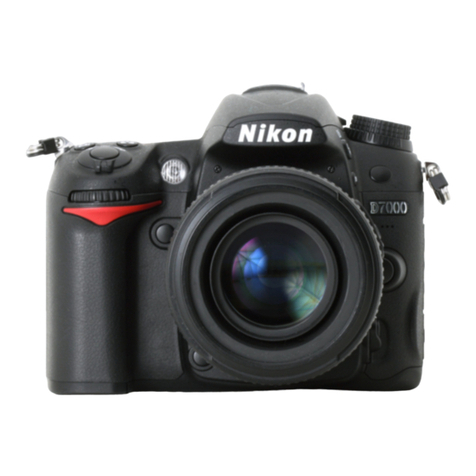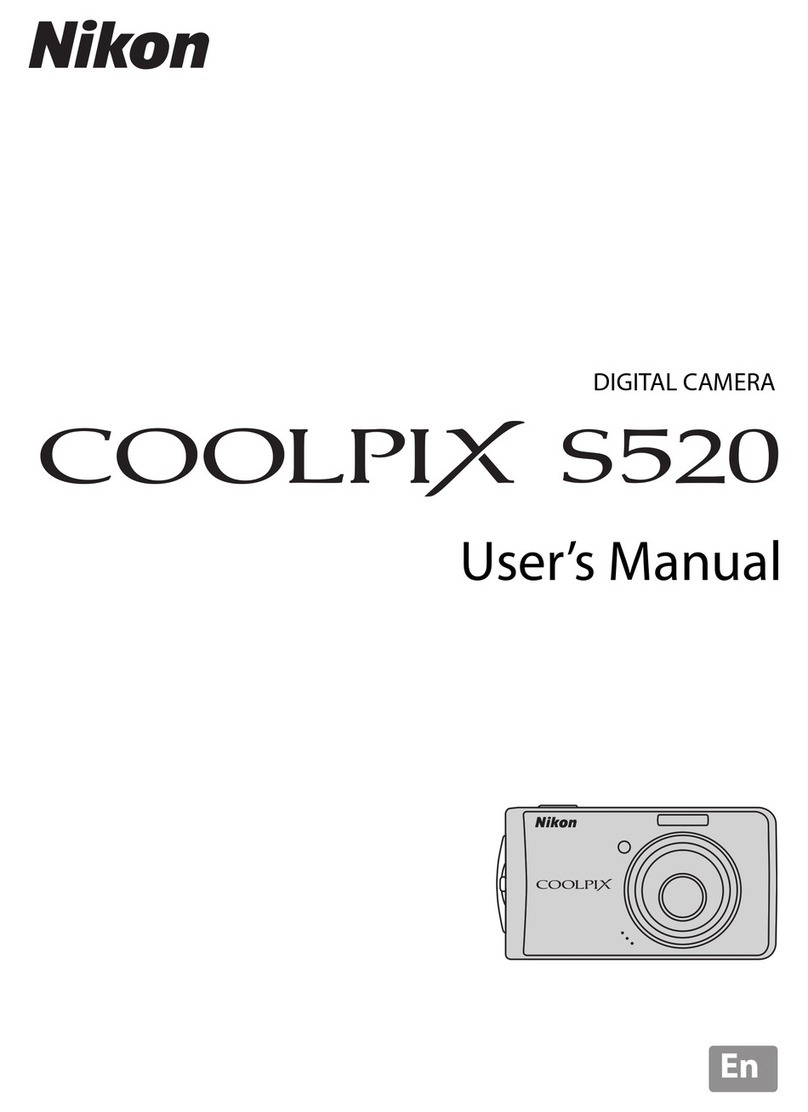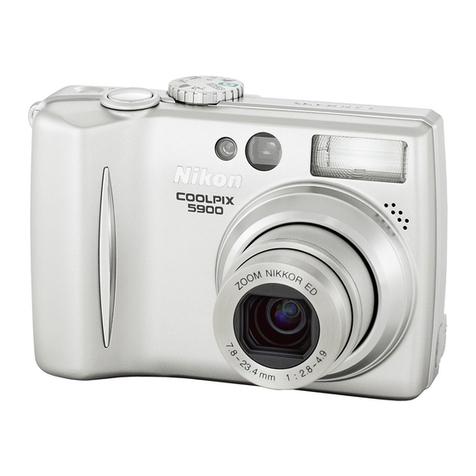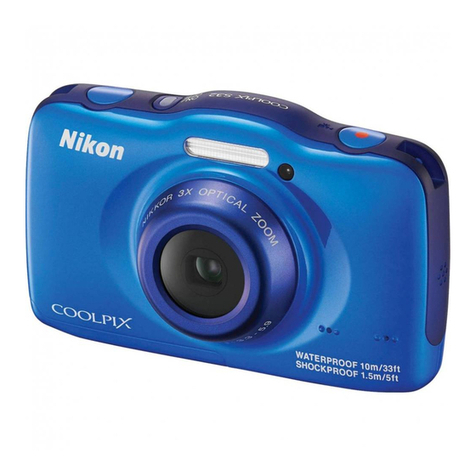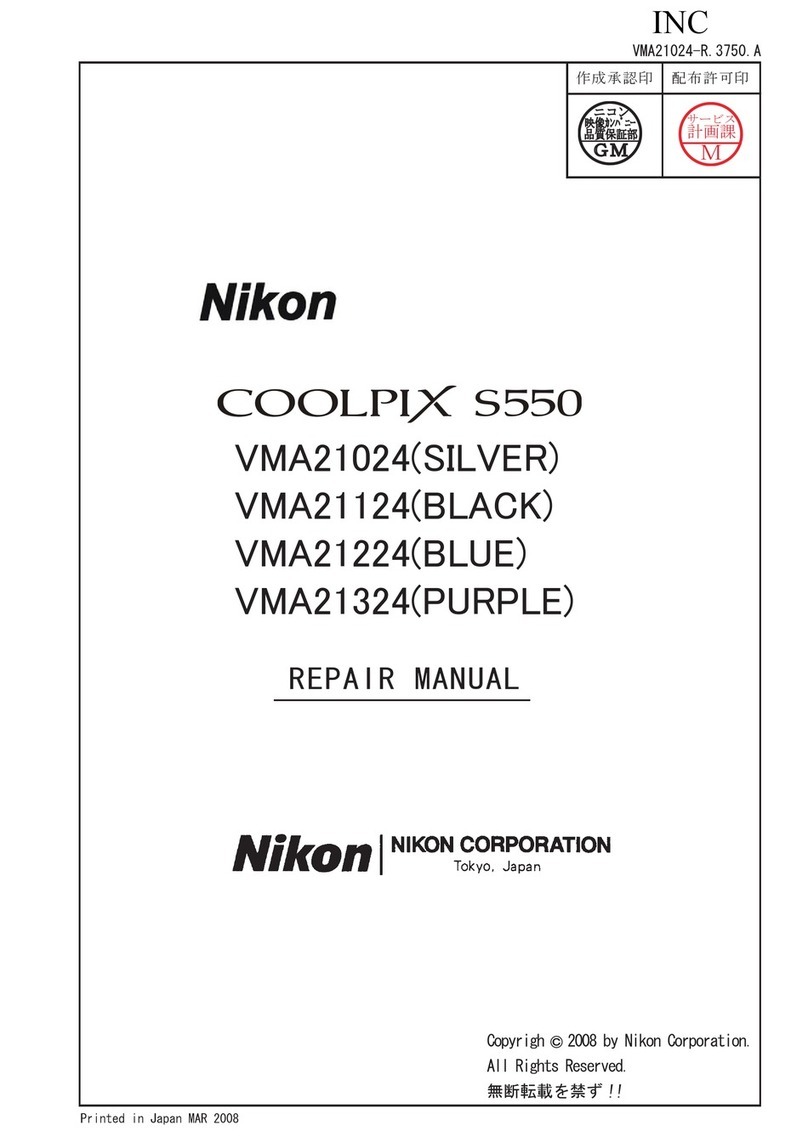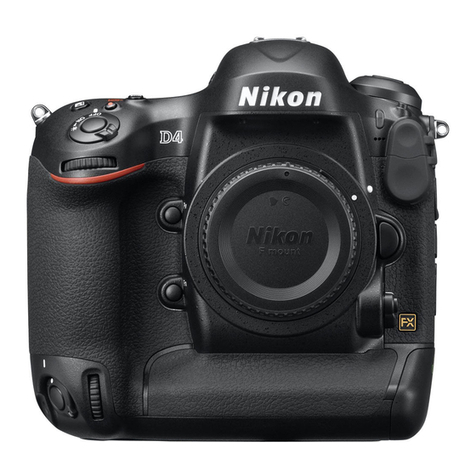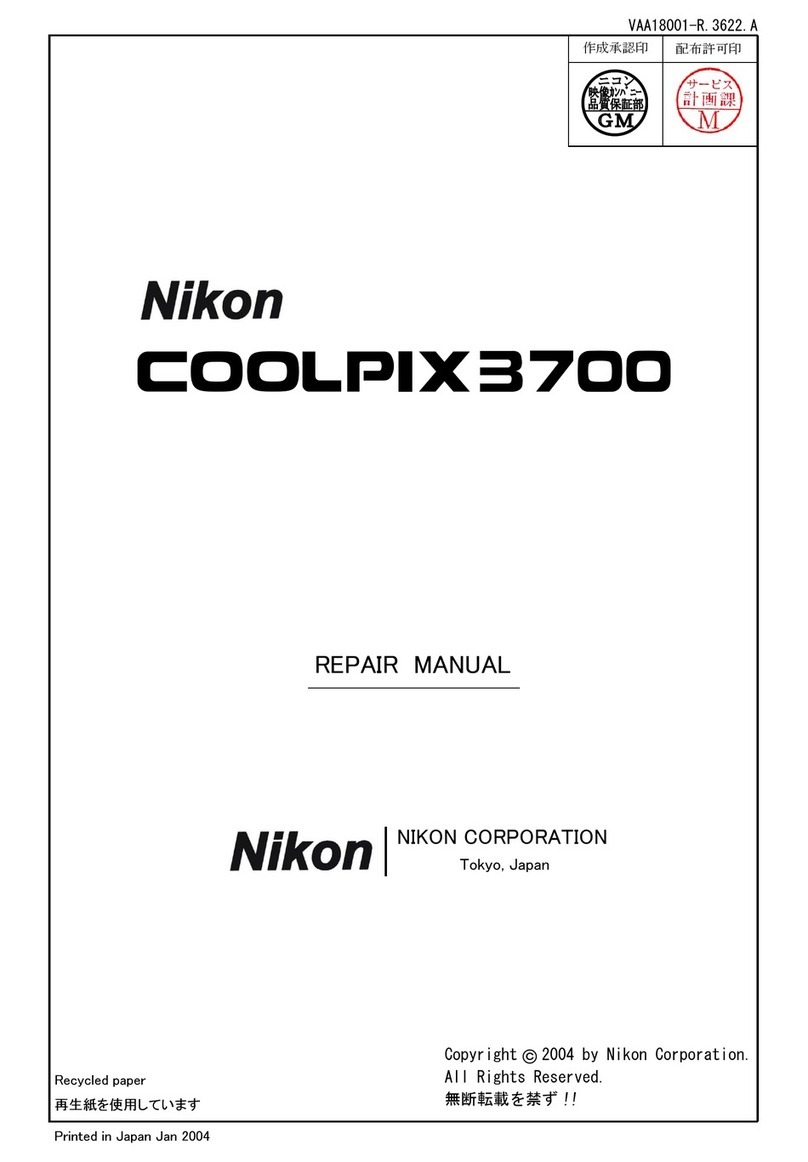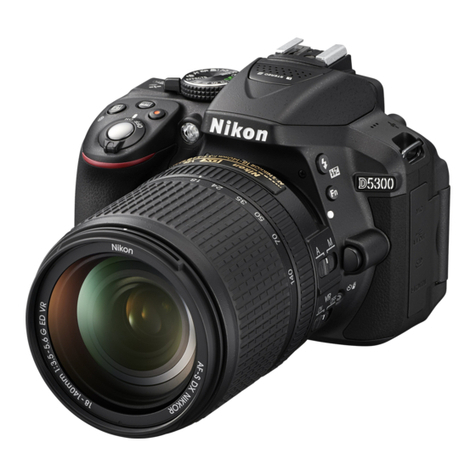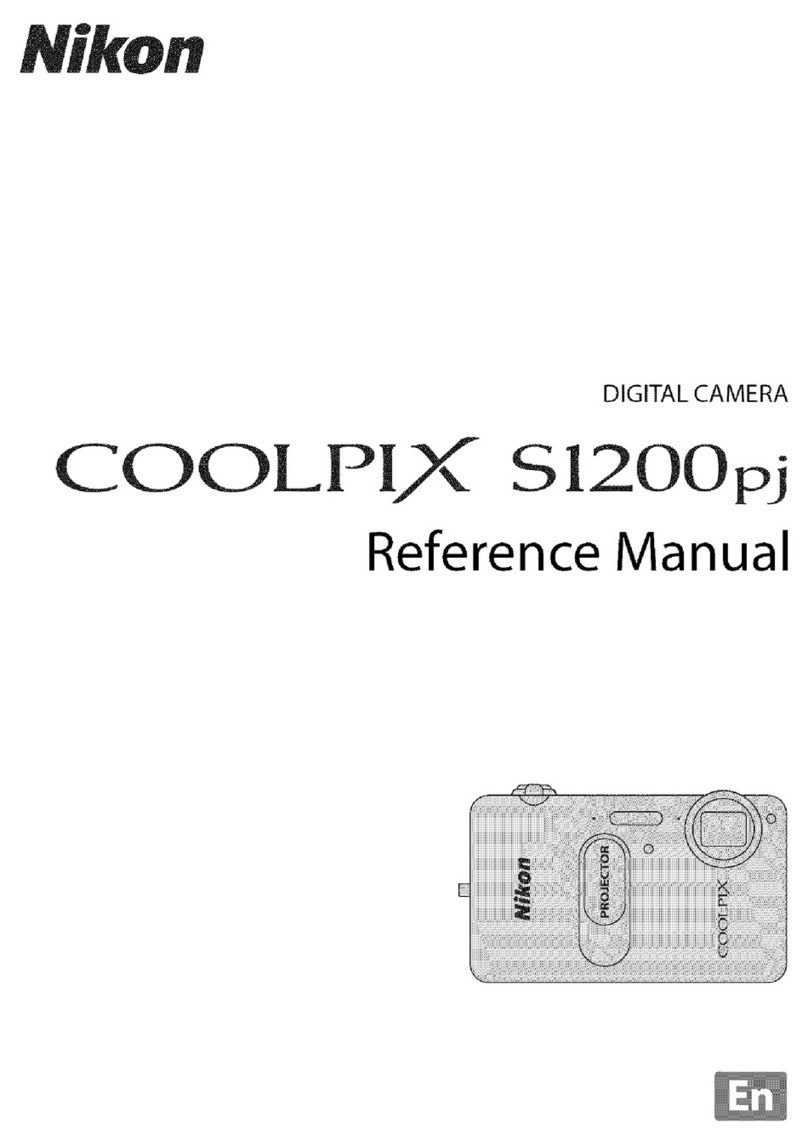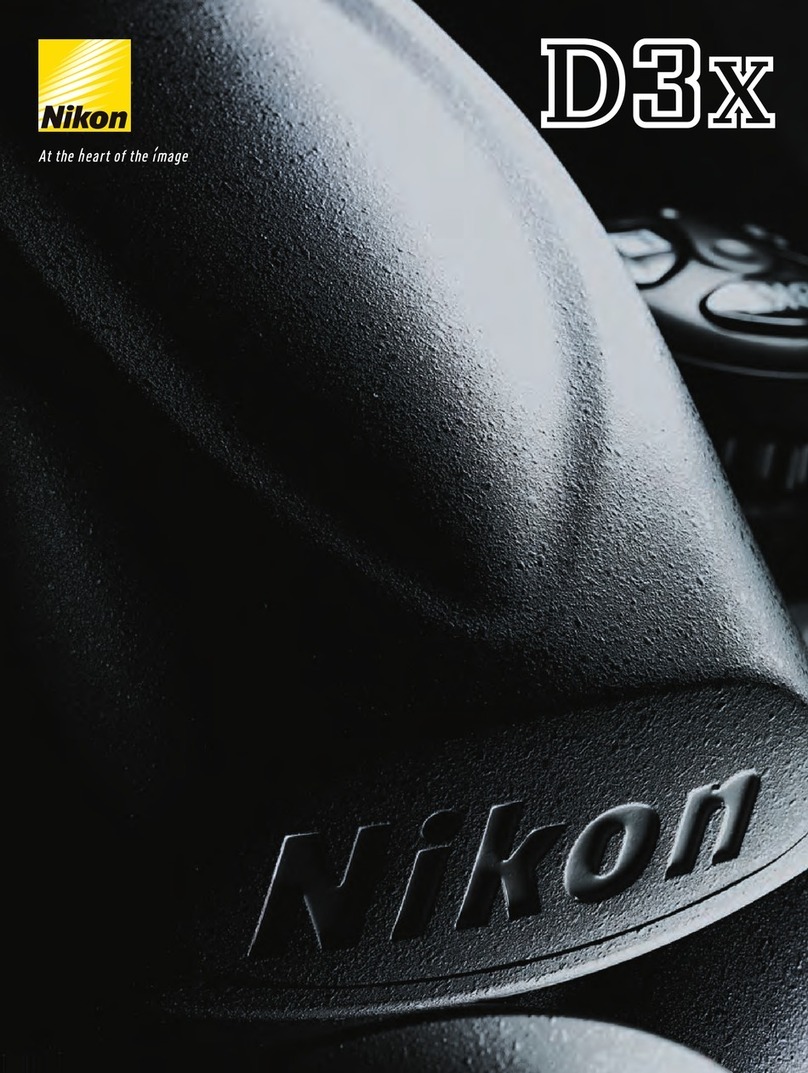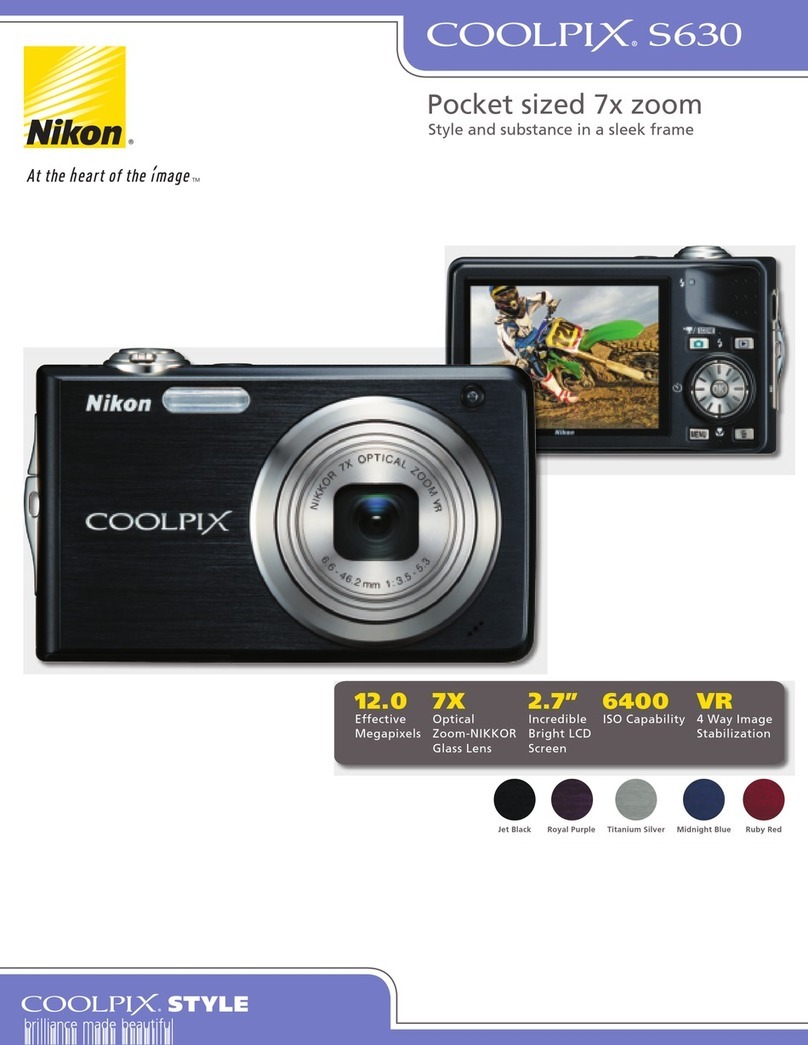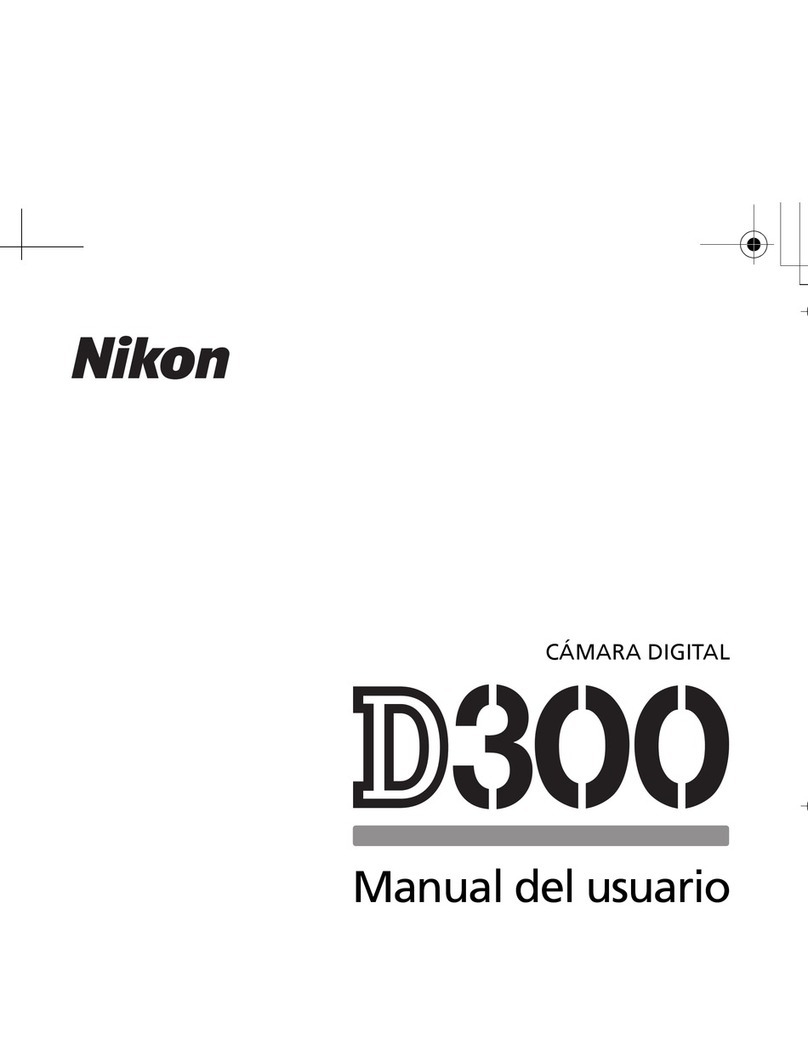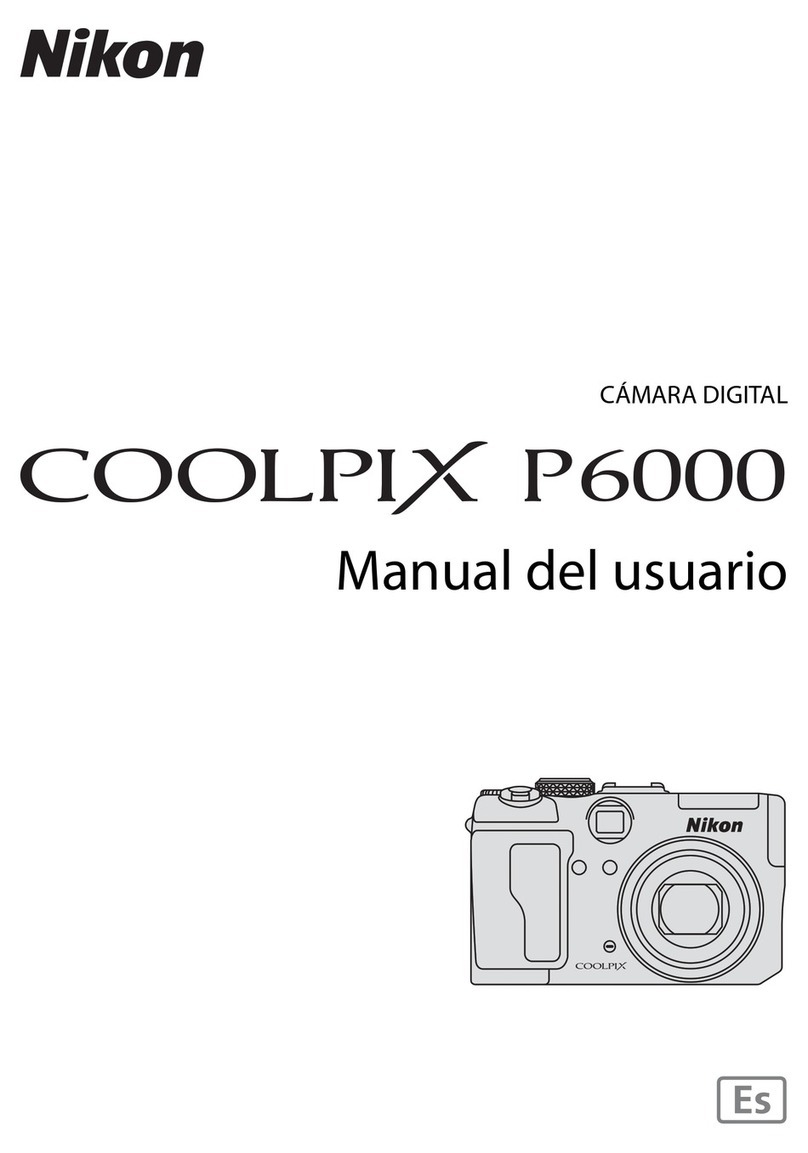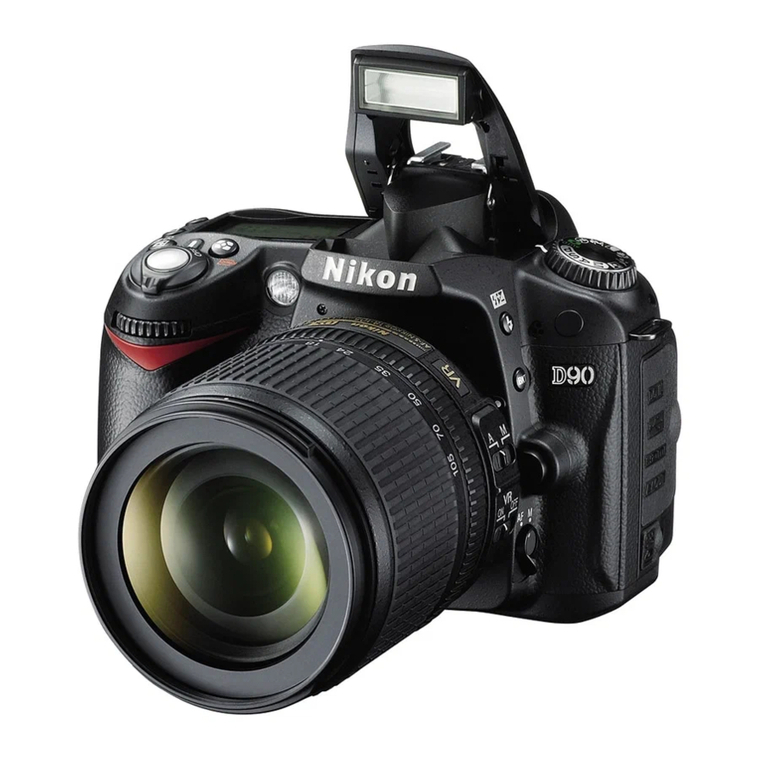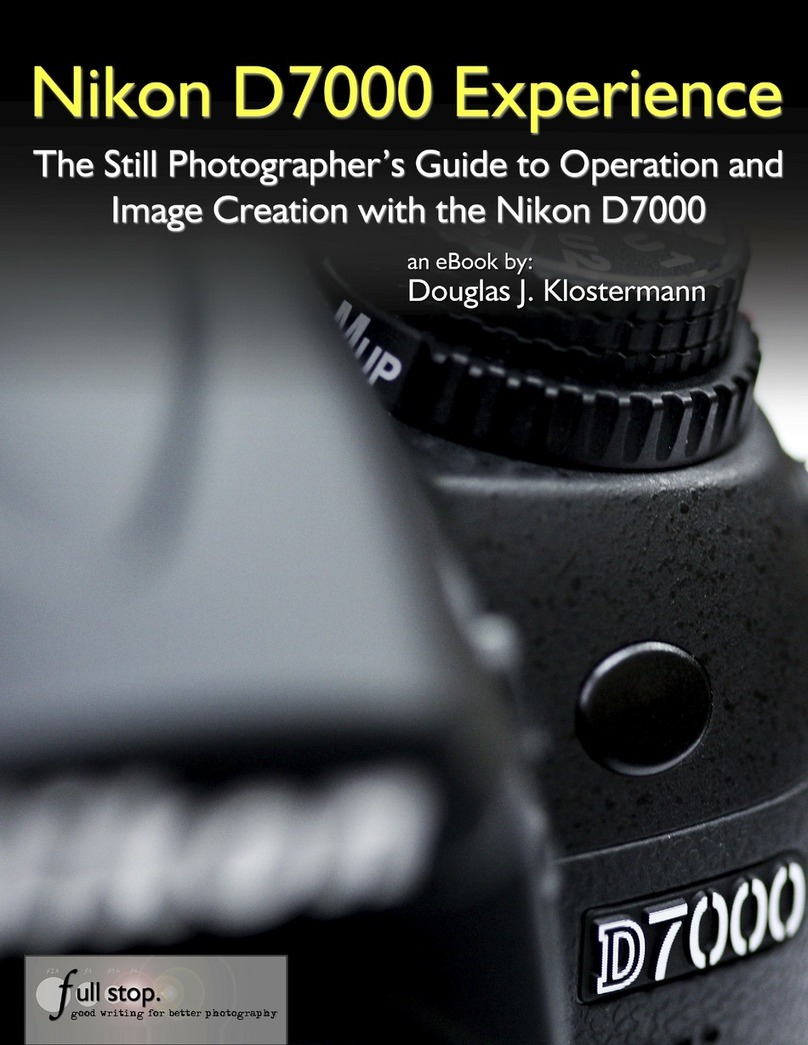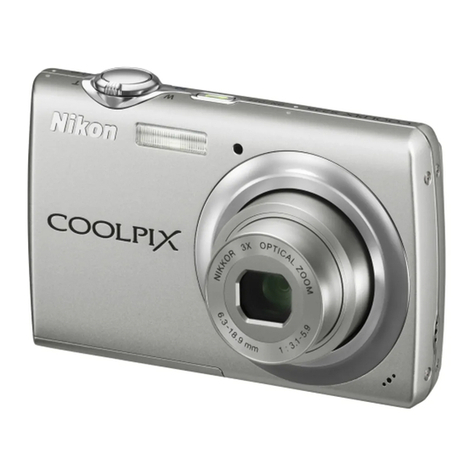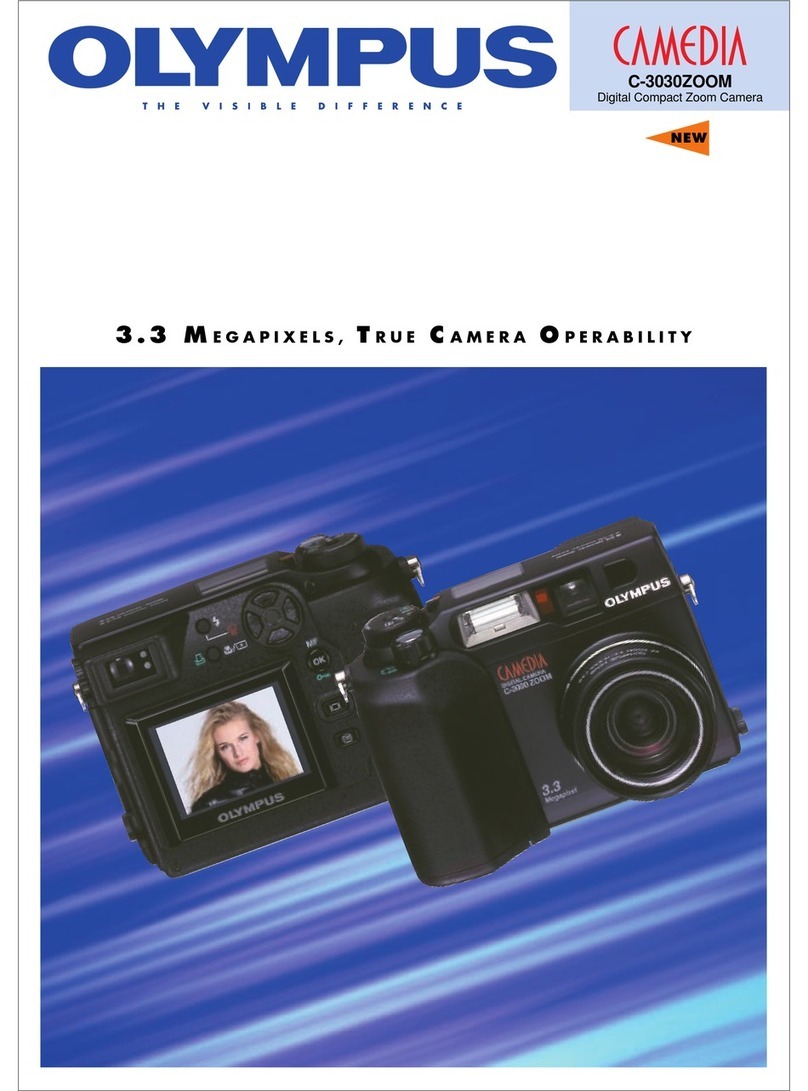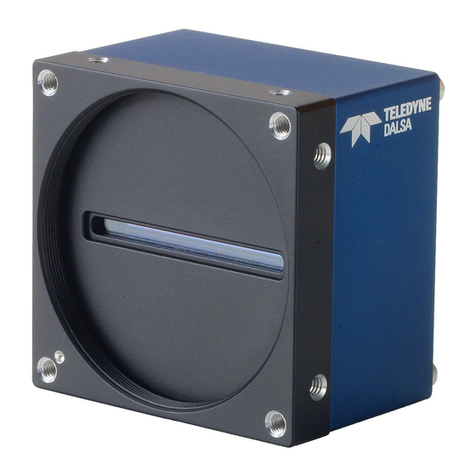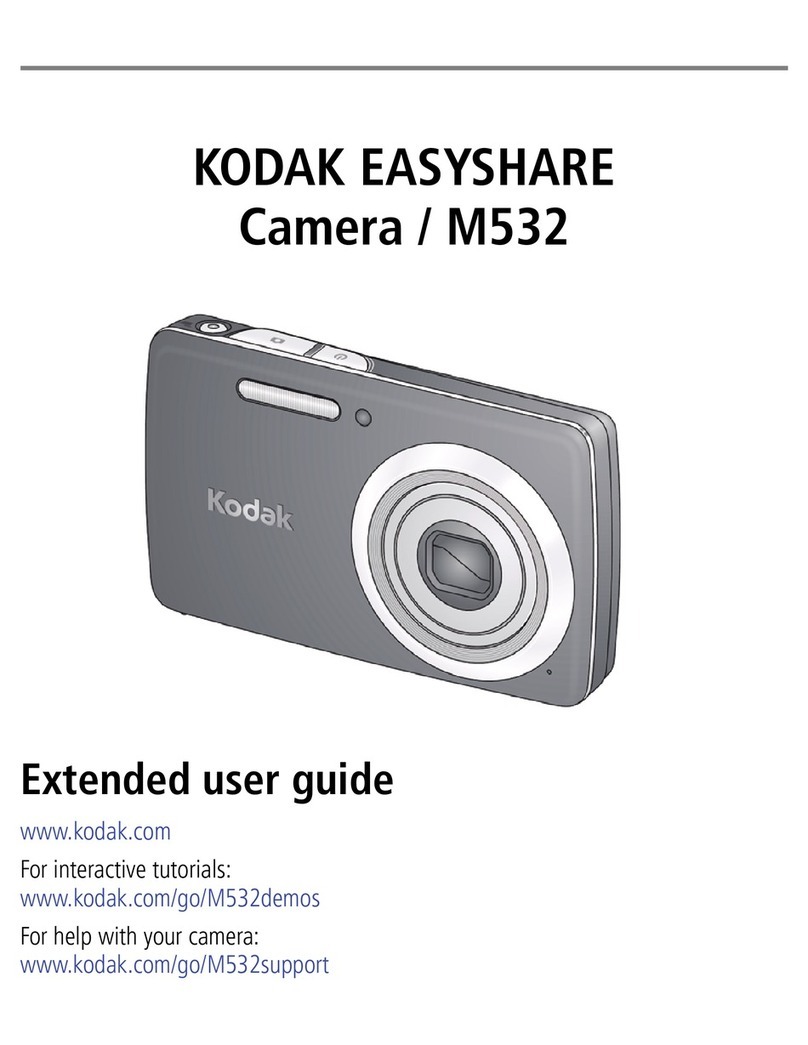Nikon Digital SLR Camera D700 Specifications
Printed in China Code No. 6CE80091 (0807/A) K
• CompactFlash and Extreme are registered trademarks of SanDisk Corporation. • HDMI, the HDMI logo and High-
Definition Multimedia Interface are trademarks or registered trademarks of HDMI Licensing LLC. • Products and brand
names are trademarks or registered trademarks of their respective companies. • Images in viewfinders, on LCDs and
monitors shown in this brochure are simulated.
Image area L M S
FX format (36 x 24) 4,256 x 2,832 3,184 x 2,120 2,128 x 1,416
DX format (24 x 16) 2,784 x 1,848 2,080 x 1,384 1,392 x 920
Type
Type Single-lens reflex digital camera
Lens Mount Nikon F bayonet mount with AF coupling and AF contacts
Picture Angle Equivalent to angle produced by lens focal length (1.5 times when DX format is selected)
Effective Pixels
Effective Pixels 12.1 million
Image Sensor
Image Sensor CMOS sensor, 36.0 x 23.9 mm; Nikon FX format
Total Pixels 12.87 million
Dust-Reduction System Image sensor self-cleaning function, Image Dust Off reference data acquisition (Capture
NX 2 required)
Storage
Image Size (pixels)
File Format 1) NEF (RAW): 12 or 14 bit, lossless compressed, compressed, or uncompressed
2) TIFF (RGB)
3) JPEG: JPEG-Baseline compliant with fine (approx. 1:4), normal (approx. 1:8), or basic
(approx. 1:16) compression (Size priorit y); [Optimal quality] compression available
4) NEF (RAW) + JPEG: Single photograph recorded in both NEF (RAW) and JPEG formats
Picture Control System Four setting options: Standard, Neutral, Vivid, Monochrome; each option can be adjusted
Storage Media CompactFlash (Type I, compliant with UDMA)
File System Compliant with DCF 2.0, DPOF, Exif 2.21, Pictbridge
Viewfinder
Viewfinder SLR-type with fixed eye-level pentaprism
Diopter Adjustment -3 to +1 m-1
Eyepoint 18 mm (-1.0 m-1)
Focusing Screen Type B BriteView Clear Mat te VI screen with superimposed AF points and framing grid
lines
Frame Coverage
Approx. 95% (vertical/horizontal)
Magnification
Approx. 0.72x (50mm f/1.4 lens at infinity; -1.0 m-1)
Reflex Mirror Quick-return type
Depth-of-field Preview When CPU lens is attached, lens aperture can be stopped down to value selected by user
(A and M modes) or value selected by camera (P and S modes)
Lens Aperture Instant-return type, with depth-of-field preview button
Lens
Compatible Lenses Refer to page 22.
Shutter
Type Electronically controlled vertical-travel focal-plane shutter
Speed 1/8,000 to 30 s in steps of 1/3, 1/2 or 1 EV; Bulb; X250
Flash Sync Speed X = 1/250 s; synchronizes with shutter at 1/320 s or slower (flash range drops at speeds
between 1/250 and 1/320 s)
Release
Release Modes 1) Single-frame [S] mode, 2) Continuous Low-speed [CL] mode, 3) Continuous High-speed
[CH] mode, 4) Live View [LV] mode, 5) Self-timer [ ] mode, 6) Mirror-up [Mup] mode
Continuous Shooting With Rechargeable Li-ion Battery EN-EL3e: 1-5 frames per second in [CL] mode, 5 fps in
Speed [CH] mode
With Multi-Power Battery Pack MB -D10 with bat teries other than Rechargeable Li-ion
Battery EN-EL3e or AC Adapter EH-5a/EH-5: 1-7 frames per second in [CL] mode, 8 fps in
[CH] mode
Self-timer Electronically controlled timer with duration of 2, 5, 10 or 20 s
Exposure
Metering TTL full-aperture exposure metering using 1,005-pixel RGB sensor
Metering System 1) 3D Color Matrix Metering II (type G and D lenses); Color Matrix Metering II (other CPU
lenses); Color Matrix Metering (non-CPU lenses if user provides lens data)
2) Center-Weighted: Weight of 75% given to 8-, 12-, 15- or 20-mm circle in center of
frame, or weighting based on average of entire frame
3) Spot: Meters 4-mm circle (about 1.5% of frame) centered on selected focus point (on
center focus point when non-CPU lens is used)
Metering Range 1) 0 to 20 EV (Matrix or Center-Weighted Metering), 2) 2 to 20 EV (Spot Metering) (ISO 100
equivalent, f/1.4 lens, at 20°C/68°F)
ExposureMeter Coupling Combined CPU and AI
Exposure Modes 1) Programmed Auto (P) with flexible program, 2) Shutter-Priority Auto (S), 3) Aperture-
Priority Auto (A), 4) Manual (M)
ExposureCompensation ±5 EV in increments of 1/3, 1/2 or 1 EV
Exposure Lock Exposure locked at detected value with AE-L/AF-L button
Exposure Bracketing Exposure and/or flash bracketing (2 to 9 exposures in increments of 1/3, 1/2, 2/3 or 1 EV)
Sensitivity ISO 200 to 6400 in steps of 1/3, 1/2, or 1 EV; can be set to approx. 0.3, 0.5, 0.7, or 1 (ISO
100 equivalent) EV below ISO 200, or to approx. 0.3, 0.5, 0.7, 1 (ISO 12800 equivalent), or
2 (ISO 25600 equivalent) EV over ISO 6400
Active D-Lighting Can be selected from [Auto], [High], [Normal], or [Low]
Focus
Autofocus TTL phase-detection AF, 51 focus points (15 cross-sensors) by Nikon Multi-CAM 3500FX
autofocus module; Detection: -1 to +19 EV (ISO 100 at 20°C/68°F); AF fine tuning possible;
AF-assist illuminator (range approx. 0.5-3 m/1.6-9.8 ft.)
Lens Servo 1) Autofocus: Single-servo AF (S); Continuous-servo AF (C); Focus Tracking automatically
activated according to subject status, 2) Manual focus (M) with electronic rangefinder
Focus Point Single AF point can be selected from 51 or 11 focus points
AF-Area Mode 1) Single-point AF, 2) Dynamic-area AF [number of AF points: 9, 21, 51, 51(3D-Tracking)] ,
3) Auto-area AF
Focus Lock Focus can be locked by pressing AE-L/AF-L button or by pressing shutter-release button
halfway (Single-point AF in AF-S)
Flash
Built-in Flash Manual pop-up type; guide number of 17/56 (ISO 200, m/ft., 20°C/68°F) or 12/39 (ISO 100,
m/ft., 20°C/68°F)
Flash Control 1) TTL flash control with 1,005-pixel RGB sensor; i-TTL balanced fill-flash and standard
i-TTL fill-flash available with SB-900, 800, 600 or 400
2) Auto aperture (AA): Available with SB-900, 800 and CPU lens
3) Non-TTL auto (A): Available with SB-900, 800, 28, 27 or 22s
4) Distance-priority manual (GN): Available with SB-900, 800
Flash Sync Modes 1) Front-curtain sync (normal), 2) Slow sync, 3) Rear-curtain sync, 4) Red-eye reduction,
5) Red-eye reduction with slow sync
Flash Compensation -3 to +1 EV in increments of 1/3, 1/2 or 1 EV
Flash-ready Indicator Lights when Speedlight such as SB-900, SB-800, SB-600, SB-40 0, SB-80DX, SB-28DX, or
SB-50DX is fully charged; blinks after flash is fired at full output
Accessory Shoe Standard ISO 518 hot-shoe contact with safety lock
Sync Terminal ISO 519 standard terminal
Nikon Creative Lighting
With Speedlights such as SB-900, SB-800, SB-600, SB-R200, SU-800 (commander only),
System
suppor ts Advanced Wireless Lighting, Auto FP High-Speed Sync, Flash Color Information
Communication, modeling flash and FV lock; built-in flash can be used as a commander
White Balance
White Balance • Auto (T TL white balance with main image sensor and 1,005-pixel RGB sensor);
• Seven manual modes can be preset with fine-tuning; color temperature setting; white
balance bracketing: 2 to 9 exposures in increments of 1, 2 or 3
Live View
Modes Hand-held mode: TTL phase-detection AF with 51 focus areas (15 cross-type sensors)
Tripod mode: Contrast-detect AF on a desired point within a specific area
Monitor
LCD Monitor 3-in., approx. 920,000-dot (VGA), 170-degree wide-viewing-angle, 100% frame coverage,
low-temperature polysilicon TFT LCD with brightness adjustment
Playback
Playback Function Full-frame and thumbnail (4 or 9 images) playback with playback z oom, slide show,
histogram display, highlight display, auto image rotation, and image comment (up to 36
characters)
Interface
USB Hi-Speed USB
Video Output NTSC or PAL; simultaneous playback from both the video output and on the LCD monitor
available
HDMI Output Supports HDMI version 1.3a; Type C mini connector is provided; simultaneous playback
from both the HDMI output terminal and on the LCD monitor not available
Ten-pin Terminal 1) GPS: NMEA 0183 (Ver. 2.01 and 3.01) interface standard supported with 9-pin D-sub
cable and GPS Cable MC-35 (optional)
2) Remote control: via Ten-pin terminal
Supported Languages
Suppor ted Languages Chinese (Simplified and Traditional), Dutch, English, Finnish, French, German, Italian,
Japanese, Korean, Polish, Portuguese, Russian, Spanish, Swedish
Power Source
Battery One Rechargeable Li-ion Bat tery EN-EL3e
Battery Pack Multi-Power Bat ter y Pack MB-D10 (optional) with one Rechargeable Li-ion Battery EN-
EL4a/EN-EL4 (batter y chamber cover BL-3 requir ed) or EN-EL3e, or eight R6/A A-size
alkaline (LR6), Ni-MH (HR6), lithium (FR6) batteries, or nickel-manganese ZR6 batteries
AC Adapter AC Adapter EH-5a/EH-5 (optional)
Tripod Socket
Tripod Socket 1/4 in. (ISO 1222)
Dimensions/Weight
Dimensions(W x H x D) Approx. 147 x 123x 77 mm (5.8 x 4.8 x 3.0in.)
Weight Approx. 995 g (2.19 lb.) without batter y, memory card, body cap or LCD monitor cover
Operating Environment
Temperature 0-40°C/32-104°F
Humidity Under 85% (no condensation)
Accessories
SuppliedAccessories* Rechargeable Li-ion Battery EN-EL3e, Quick Charger MH-18a, USB Cable UC-E4, Video
Cable EG-D100, Camera Strap AN-D700, Body Cap BF-1A, Accessory Shoe Cover BS-1,
LCD Monitor Cover BM-9, Software Suite CD-ROM
*Supplied ac cessories may dif fer depending on c ountry or area
Main Optional Wireless Transmitter WT-4/4A, Magnifying Eyepiece DK-17M, AC Adapter EH-5a,
Accessories Capture NX 2 Software, Camera Control Pro 2 Software, Image Authentication Software
